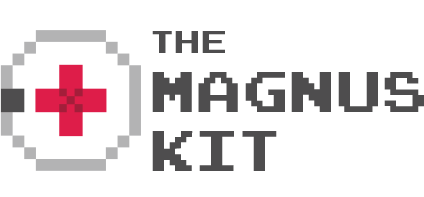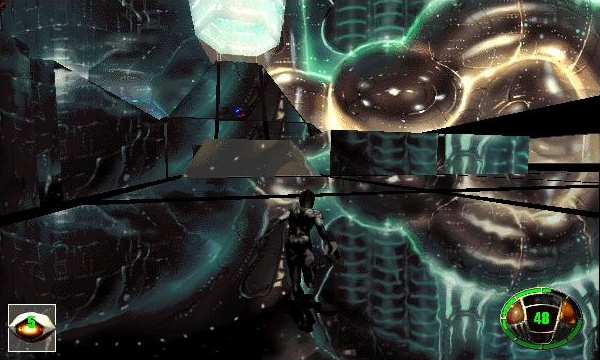Let’s Look At: Dead Rising
What is it about zombies that fascinates people so much - the loss of control, the chance to cut loose in a world with no rules, or maybe the way they shamble? In any case, zombies infest everything from movies like George A. Romero’s Night of the Living Dead, to Capcom’s Resident Evil. With Dead Rising (2006) Capcom, arguably the master of the zombie game, decided to take things in a campier direction.
Let me start by saying that I have a nuanced relationship with the undead. If were on Facebook, it would definitely fall under the “it’s complicated” umbrella. On one hand, I kind of have a (mildly) crippling fear of zombie movies. Every single one follows people who have clearly never seen a zombie movie or even picked up Frankenstein for eighth grade English. So-called protagonists always lean over corpses, let the bitten person hang around, and in general have zero self-preservation skills. On the other hand, I love zombie games. Give me an axe, and I’m good to go. Park me in front of a screen without a controller, and we’ll have issues. Maybe it’s a control thing.
In Dead Rising you play as Frank West, a photojournalist who enters the small town of Willamette, Colorado, a, on a tip that “something big was going down.” Turns out several things are up, and shambling out of their graves and into the town. The national guard has closed the whole place off, and your helicopter is forced to leave you at the mall where you’ll be picked be picked up in 72 hours. You’re on your own until then, and before you know it, you’re unraveling the whole narrative like the amazing journalist you are.
Dead Rising takes its setting and theme from George A. Romero’s Dawn of the Dead, where a bunch of people are trapped in a middle American mall amidst a zombie apocalypse. While the movie bitingly critiques the consumerism of the 70s, Dead Rising is really an exercise in how silly you can make a plot and still have it make sense. Since the infamous “Jill Sandwich” days of Resident Evil, Capcom has reigned unrivaled in its ability to produce stupid dialogue and that’s on full display here. The mall is filled with helpless survivors, psychopaths who can’t adapt to their non-American life, and lots of clothing options. You can chop through zombies with a chainsaw wearing only a giant horse head.
Combat in Dead Rising is messy and fun. Some weapons are better than others, but you can use almost anything from giant battle axes to teddy bears. Some of the bosses have unique weapons, which respawn where they die, which is nice if you want an extra powerful option. Most weapons have their own unique movesets and fit a variety of situations, from crowd-control to one-on-one. Things can feel a bit wooden at times, but you’ll be too deep in zombie parts to really notice.
You level up as you kill zombies, rescue survivors, and complete missions, and with level one of your stats will increase. You gain can a skill, or attack, item storage, throw strength, speed, and life can all increase, at the rate of one point in one of your attributes per level. Some of the skills are more useful than others. I found little use for the “Zombie Ride” skill, which allows you to walk on top of a horde of undead, but I did use the “Jump Kick” skill nearly 500% of the time I was moving. By the time you get to the end of the game, you’ll be a one-man-karate-judo-and-wrestling master, flinging undead by their rotten ankles across the mall. Who wouldn’t want that on their resume?
One of the best parts of this game is also the most divisive; every mission occurs as specific times, so you have to get places by a certain point. In your first play through, it is very hard (if not impossible) to complete every side mission, main mission, and save every survivor. If you fail to recue a survivor in time a message will flash across your screen in red “GREG ROBERTS IS DEAD”, or somesuch. If you fail to complete a story mission, you can’t do any of the rest of them. You can still survive for 72 hours but, as the game says, “the truth will remain buried forever.” It’s so goddamn rare that a game has the guts to deny players something that I’m always pleased to see when a game says, “No, you do it my way or you don’t fucking do it.”
Part of the combat’s strengths falls apart around the boss fights. Zombies usually die in a hit or two, but bosses are often extremely hard. They move faster, have better weapons, and usually have an environmental advantage. One of the earliest bosses, a clown with twin chainsaws, also can breathe fire, throw knives, and throw balloons filled with some kind of noxious gas. You can easily lose all your health in a minute, so you need to study the bosses before you engage them. You can only save at certain points of the game, so it’s very easy to lose hours of progress if you stumble on a boss fight by accident.
The final issue with Dead Rising is one I’ve written about before; ludonarrative dissonance. In Dead Rising you can beat bosses with sledge hammers, swords, and fill them with bullets, but the cutscenes will have them running off, looking fine. Or worse, the boss will get shot once in the leg and be down for the count. It pulls you out of the game each time happens, especially with the main antagonist. I understand it’s a hard problem to fix. If you have guns behave realistically, the game falls apart. If enemies take shotgun shells to the face, guns lose the story impact we expect them to have. Maybe the only solution would be to remove guns from the game entirely, but that really wouldn’t make sense for middle America. Either way, it’s a more minor niggle.
Worth Playing?
Yes
Dead Rising is a stupid, silly, nonsense romp through a sea of putrid zombie parts. It’s the most fun you’ll have with the undead until the government finally hears my proposal to start the Department of Reanimation. The bosses are a bit too hard the first time around and the cut scenes jar, but the rest of Dead Rising is so well put together that I can forgive the problems. Go forth and suplex some zombies, my friends.
Everybody who doesn’t read this article will turn into zombies. Save yourself! Save the world! Share it!
For more feelings about the living-challenged, don’t forget to follow TheMagnusKit on Facebook and Twitter.
















































































































































